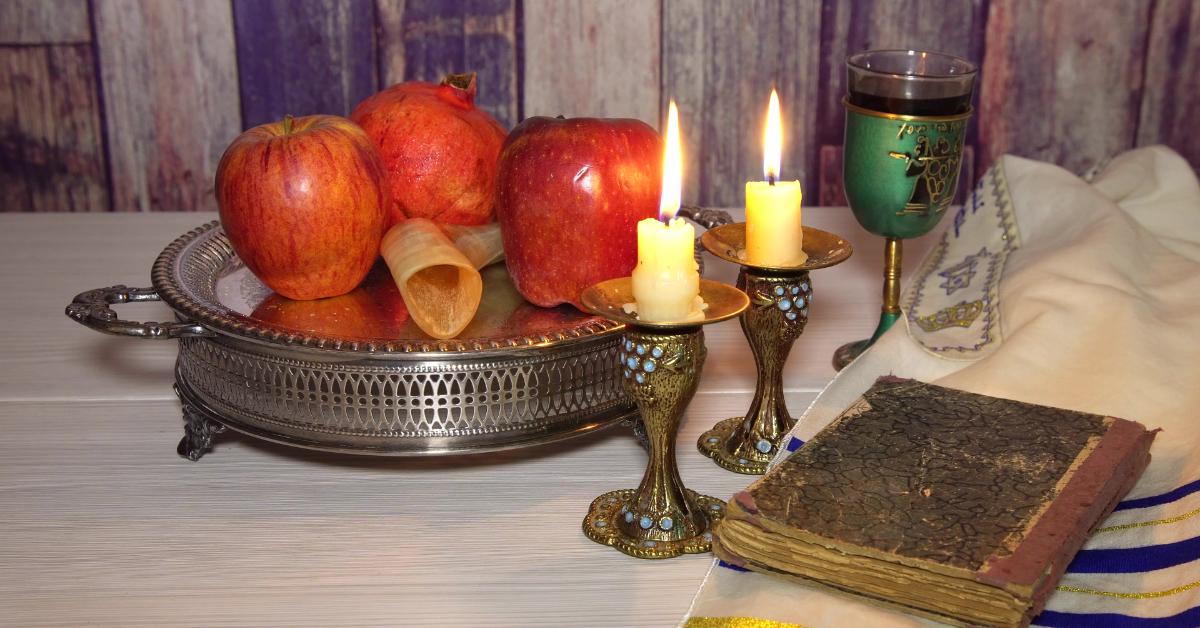Shanah Tovah! Learn About Customary Rosh Hashanah Greetings
Published Sept. 24 2022, 1:17 p.m. ET

With Jews celebrating Rosh Hashanah this weekend, now might be the time to brush up on the traditions of the holiday. All you gentiles out there might want to know how to greet someone for Rosh Hashanah, for example.
Here in 2022, Rosh Hashanah lasts from sundown on Sunday, Sept. 25, until sundown on Tuesday, Sept. 27. Read on for more information about the holiday and its customs — including customary greetings.
Rosh Hashanah marks the start of the Jewish year.

As TIME explains, Rosh Hashanah is a holiday that marks the Jewish New Year, with the name translating to “head of the year.” It starts at the beginning of Tishrei, the seventh month on the Hebrew calendar. And the holiday is the start of ten days of repentance and awe, with Yom Kippur, or the Day of Atonement, capping off the High Holy Days at the end of that ten-day span.
History.com adds that the phrase “Rosh Hashanah” appeared for the first time in in 200 A.D., making its debut in the Mishna, a Jewish code of law that was compiled that year.
These days, Jews observe Rosh Hashanah one either one or two days, depending on their denomination. Many Jews spend the holiday at synagogues, reading from a special prayer book called the machzor.
Following the religious services, many Jews head home, light two ceremony candles, and share a meal embodying symbols of Rosh Hashanah. Apples and honey are common Rosh Hashanah foods, for example, with apples associated with healing properties and honey symbolizing hopes for a sweet new year. The traditional challah bread is baked in a circular loaf on Rosh Hashanah as a reference either to the cycle of life or the crown of God, per History.com.
“Shanah tovah” is a common greeting for Rosh Hashanah, but it’s not the only one.
According to My Jewish Learning, the usual Rosh Hashanah greeting is “shanah tovah” (pronounced shah-NAH toe-VAH), which translates to “good year.”
That phrase is a condensed version of a longer phrase: “L’shanah tovah u’metukah” (pronounced l’shah-NAH toe-VAH ooh-meh-too-KAH), which translates to “for a good and sweet year.”
Another greeting you might hear on Rosh Hashanah is “chag sameach” (pronounced chahg sah-MAY-ach), which translates to “happy holiday,” My Jewish Learning points out. (ReformJudaism.org, however, says that ‘chag sameach,’ strictly speaking, “is used only on the three pilgrimage festivals: Passover, Shavuot, and Sukkot.”)
And then there’s “gut yontff,” (pronounced goot YUHN-tiff), a Yiddish version of a Hebrew phrase meaning “good day,” reserved for major Jewish holidays when work is forbidden.
A blog post from the Jewish Federation of Greater Pittsburgh lists even more Rosh Hashanah greetings: The phrase “Ketivah v’chatima tovah” wishes someone “a good inscription and sealing (in the Book of Life)” before Rosh Hashanah, while “G’mar chatima tova!” wishes someone “a good final sealing (in the Book of Life)” between Rosh Hashanah and Yom Kippur. And “L’shanah tovah tikatayvu” translates to “May you be inscribed for a good year.”